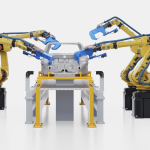Supply chains are a battleground for precision and speed. Yet, many businesses are stuck grappling with fragmented systems and inefficiencies that sabotage their efforts. Enter Electronic Data Interchange (EDI) and Order Management Systems (OMS)—a pairing that isn’t just a technical upgrade but a rethinking of how modern supply chains should operate.
Forget chasing the latest shiny tech; this is about solving real problems. EDI ensures smooth, automated communication—think invoices, purchase orders, and shipment notices—while OMS connects the dots across the entire order lifecycle. Integrated, they create a system that’s smarter, faster, and impossible for competitors to ignore.
Why Integration Matters
Too many supply chains are bogged down by disjointed data and processes. Orders fall through the cracks, inventory mismatches cause chaos, and customers are left waiting. EDI-OMS integration changes the game by seamlessly connecting systems, eliminating manual tasks, and creating a single source of truth for operations.
Take manufacturing, for example. For businesses relying on just-in-time production, integration ensures components arrive precisely when needed—no more guesswork or costly delays. Instead of stockpiling inventory, manufacturers cut carrying costs and improve cash flow, all while maintaining a steady production rhythm.
This isn’t just optimization; it’s transformation. Integrated systems allow businesses to operate with clarity and control, turning complexity into a competitive advantage.
The Power of Real-Time Data
EDI-OMS integration doesn’t just streamline operations—it supercharges decision-making. With real-time visibility into inventory, orders, and shipments, businesses gain insights that enable them to act decisively and strategically.
Imagine having the ability to identify supply chain bottlenecks before they disrupt operations or adjust shipping schedules on the fly to meet customer demands. This kind of agility isn’t a luxury; it’s a necessity in today’s market. Integration doesn’t just give businesses the tools to adapt—it makes adaptability part of their DNA.
Stop Treating the Supply Chain Like an Afterthought
Here’s the hard truth: too many businesses still see supply chains as a back-office function, rather than the backbone of their operations. That mindset is holding them back.
EDI-OMS integration is the antidote to fragmented thinking. It’s not a glamorous headline-grabber, but that’s precisely its strength. It delivers results where they matter most: faster fulfillment, fewer errors, and a supply chain that can actually keep up with the demands of modern commerce.
Manufacturers are already proving the value. By synchronizing supply deliveries with production schedules, they’ve turned efficiency into a competitive weapon. They’re not just meeting expectations—they’re redefining them.
The lesson is clear: the future of supply chains won’t be built on buzzwords or superficial improvements. It will be built on systems that work, processes that adapt, and businesses that understand the value of doing the basics extraordinarily well.
If you’re serious about competing in today’s market, it’s time to stop looking for the next big thing and start investing in what will actually make a difference. Integration isn’t just a choice; it’s a necessity.







